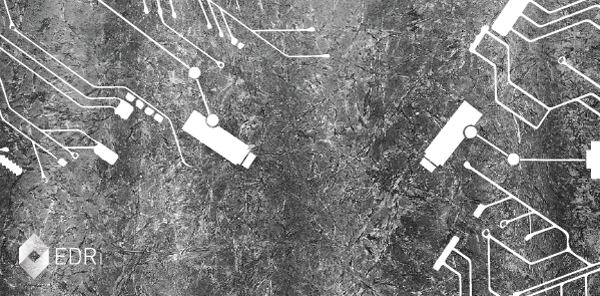Dissent in the privacy movement: whistleblowing, art and protest
This is the first blogpost of a series, originally published by EDRi member Bits of Freedom, that explains how the activists of a Berlin-based privacy movement operate, organise, and express dissent. The series is inspired by a thesis by Loes Derks van de Ven, which describes the privacy movement as she encountered it from 2013 to 2015.*
On 29 December 2013, digital activist, technologist, and researcher Jacob Appelbaum closes the year with a talk titled “To Protect and Infect, Part 2” at the 30th edition of the Chaos Communication Congress in Hamburg, Germany. He elaborates on the kind of surveillance activities the United States National Security Agency (NSA) deploys, and reveals, among other things, the existence of a dragnet surveillance system called TURMOIL. The information he shares originates from the set of classified documents that whistleblower Edward Snowden collected while working as an NSA system administrator. In June 2013, Snowden decided to share these documents with the press, explaining that he does not want to live in a world where we have no privacy and no freedom and that the public has the right to know what their government is doing to them and doing on their behalf. Later, at the 2014 Dutch Big Brother Awards, he adds that he considered the NSA’s surveillance programs such a severe violation of human rights that he felt it was his obligation to make the documents public. Snowden’s statements are related to a larger, ongoing public debate about surveillance: how much knowledge about citizens is just and necessary for governments to possess and what actions are legitimate to obtain that information?
Four activists surfaced in the wake of the Snowden leaks and quickly took on leading roles in the debate: Jacob Appelbaum, Glenn Greenwald, Sarah Harrison, and Laura Poitras. Although these four individuals had shared beliefs, they do not share a common background. At the time of the first publications Glenn Greenwald worked as a journalist, Laura Poitras as a documentary filmmaker, Jacob Appelbaum as a technologist, and Sarah Harrison as a journalist and legal researcher for WikiLeaks. Although they are certainly not the only individuals who are relevant to the larger group of activists who work on privacy and surveillance issues, their diversity really is a reflection of the diversity of the group concerned with these issues.
The privacy movement is incredibly diverse, decentralised, and therefore complicated to define. In spite of this, expressing dissent is one of the key characteristics of the movement. It is where activists find each other and share their ideas with the rest of the world. So what does dissent look like in the privacy movement? There are three different ways in which the privacy movement seems to express dissent, namely through whistleblowing, through art, and through protest. Each contributes to the understanding of the privacy movement as a whole.
First, whistleblowing is interesting because its role is threefold. Besides the fact that whistleblowing is a means for the privacy movement to expresses dissent, whistleblowers are also a vital source of information to the movement and furthermore often become activists within the movement themselves. Second, activist art is a way for the privacy movement to communicate its ideas and goals to members of the movement as well as to the wider public. Although there is only a small group of activists involved in the process of creating the art, it does affect the movement in its entirety. Last, the privacy movement also expresses dissent through protest. This is done both through traditional types of protest such as street demonstrations, as well as through protest forms that can only exist online, for example the development, promotion, and use of tools that provide more anonymity for internet users.

Although dissent is an element that characterises the privacy movement, it is certainly not the only one. The untraditional role of leadership within the movement and the physical meeting place in Berlin also contribute to the unique character of the movement.
In the upcoming articles in this series, we will explore whistleblowing, art, and protest as expressions of dissent in more depth.
The series was originally published by EDRi member Bits of Freedom at https://www.bof.nl/tag/meeting-the-privacy-movement/
(Contribution by Loes Derks van de Ven)
* This research was finalised in 2015 and does not take into account the changes within the movement that have occurred since then.


